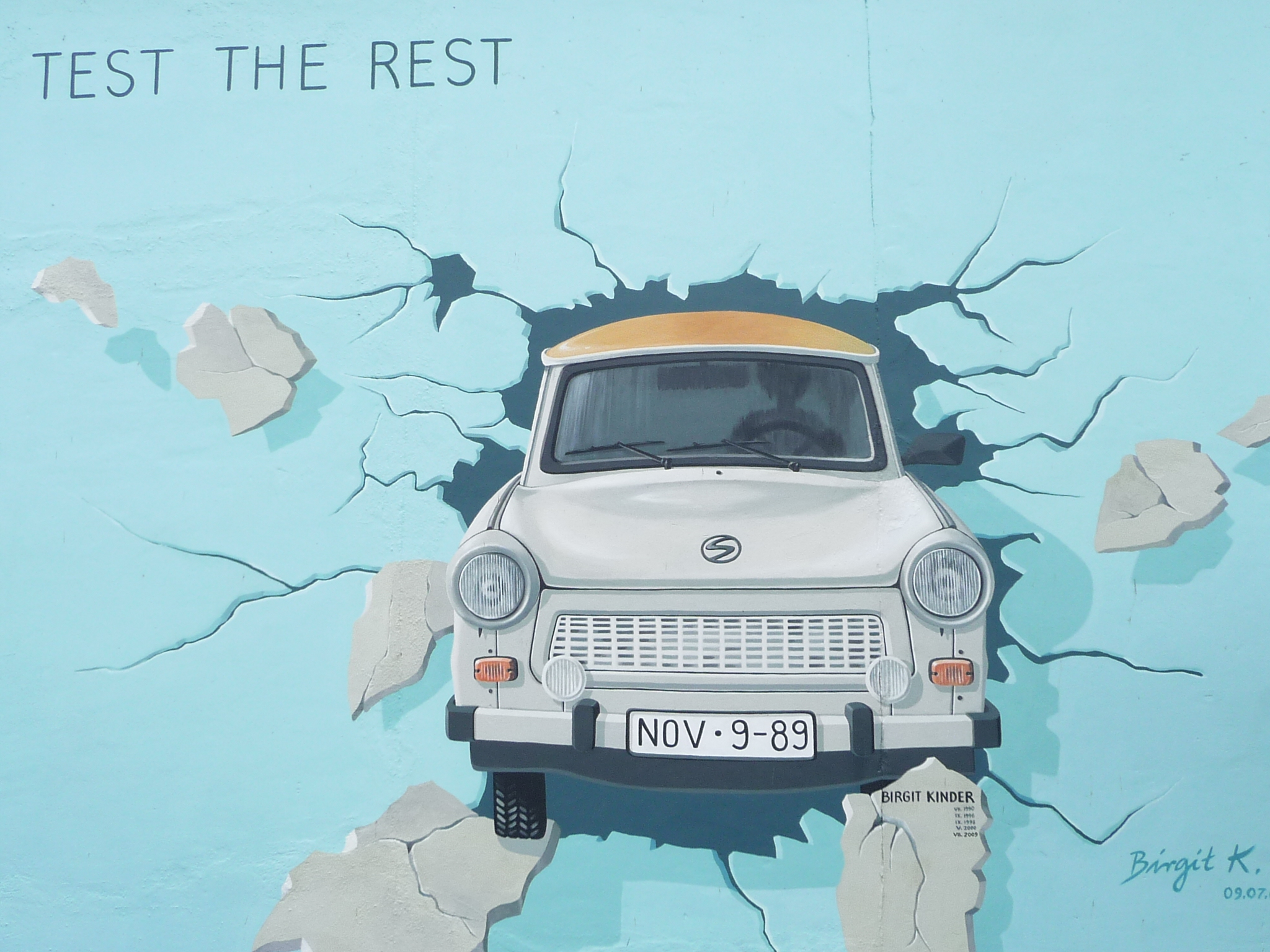What is left of the Berlin Wall

Tourists who walk the streets of Berlin today in search of traces of the wall are left with the palm of their nose. But something remained.
Year by year the Wall became more and more impenetrable. And more than the attempts to escape could the work of diplomacy. The Christmas passes, in force since Christmas 1963 and then extended until 1966, allowed West Berliners to see their relatives on the other side of the Wall again, at least during the holidays and only for twenty-four hours. In the wake of Ostpolitik, the quadripartite agreement between the United States, Great Britain, France and the Soviet Union of 1971 resolved some legal issues related to Berlin, regulating visits by inhabitants in the two different sectors of the city in a less restrictive way.
Slowly even the Wall, considered by André Malraux "the ugliest monument of this century", became part of the landscape, while maintaining its significance as a symbol of Europe and of divided Germany: the abnormality of Berlin became in a some sense normal. With the stabilization of the international bipolar balance, the city lost that role of Frontstadt, frontier city, and epicenter of every crisis. And she almost dozed off on herself after so much tension.
Then the story started moving again, in Eastern Europe and the streets of Berlin, in the 1980s to accelerate at the end of the decade. It was 1989. The defeat of Gorbachev's challenge to reform communism, the rapid crumbling of solidarity between the countries of the Warsaw Pact, the economic and productive collapse of the communist states, led to the progressive collapse of the Soviet bloc. The summer of 1989, full of changes east of the Elbe, was marked among other things by new escapes of East German citizens, this time via the embassies in Bonn to Prague, Budapest and Warsaw. A landslide: the opening of the Hungarian and Czechoslovakian borders, then the ever more impressive demonstrations in the major cities of the GDR: Leipzig, Dresden, Magdeburg, finally East Berlin. The fall of Eric Honecker and the last desperate attempt to save the regime with the presidency of Egon Krenz.
All in vain, the story had gotten out of hand. On the evening of November 9, at 6 pm, Günter Schabowski, the spokesman of the SED, the single socialist party of the GDR, showed up at an international press conference to announce the latest decisions of the Central Committee of the party, taken under the double pressure of the fugitives and street demonstrations. He announced that, pending a more detailed legal provision, East German citizens could obtain exit and residence visas for abroad. When asked about the date of validity of the new provisions by the correspondent of the Ansa agency Riccardo Ehrman, Schabowski replied, perhaps getting carried away, "ab sofort", immediately, adding that the provisions concerned all the transition points from the GDR to the BDR and therefore even those between East Berlin and West Berlin.
The Wall had fallen as it had been built: in one night. An hour later, thousands of citizens showed up at the checkpoints controlled by border guards, faced with bewildered policemen lacking in information. They all passed to the other side giving life to that celebration of irrepressible joy between the inhabitants of the two Berlins which was filmed by televisions from all over the world. At the Brandenburg Gate, hundreds of young people at the peak of euphoria danced all night long on what for a few hours was no longer the impassable Wall.
Today, tourists who walk the streets of Berlin in search of traces of the Wall are left with the palm of their nose. Everything has been dismantled, reduced to rubble, highway repair material, tourist souvenirs. Some pieces have been recovered and placed in various parts of the city, some slabs have been donated around the world. The wave of the new has overwhelmed the border that has marked the life of divided Berlin for twenty-eight years. And yet, a couple of places where you can find the old, "dear" Muro, in its original location, are still there. One, more touristy, is on Bernauer Strasse, a stone's throw from the plaque commemorating Olga Segler's unfortunate escape attempt.
The other is more hidden. You have to go down to the Treptowkanal, in the Kreuzberg district, and get on one of the small boats moored along the open-air bars that make Berlin evenings more cheerful. Once on board, you have to row hard until the canal flows into the River Spree. Better to do it at night, when the darkness softens the frenzy of the city and the television tower of Alexanderplatz is reflected in the dark waters of the river.
Entering the current of the Spree, it turns right and shortly afterwards left. You have to be careful because the Wall is right there, in the middle of the water, still dividing the city in two as if it were a dam. If you tie the rope to a mooring, you can climb the now rusting metal ladder once used by the Vopos, and walk, maybe jump and dance like those kids thirty-four years ago, on the Wall in the middle of the water. “You are leaving the American sector, Vri vriesgaietie is sovietskie sektora, You are leaving the British sector, Vous quittez le secteur français”. Today, in Berlin, no one enters or exits any sector. That cold war is over, but the hopes born on that night have sunk into the anxieties of the new millennium. And perhaps in a new cold war between West and East.
(5. END. The previous episodes can be read here , here , here and here )
This is a machine translation from Italian language of a post published on Start Magazine at the URL https://www.startmag.it/mondo/muro-berlino-parte-5/ on Wed, 16 Aug 2023 05:15:24 +0000.
